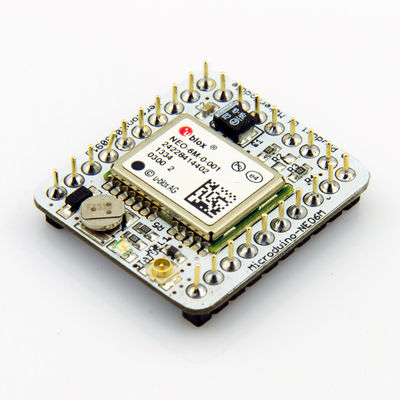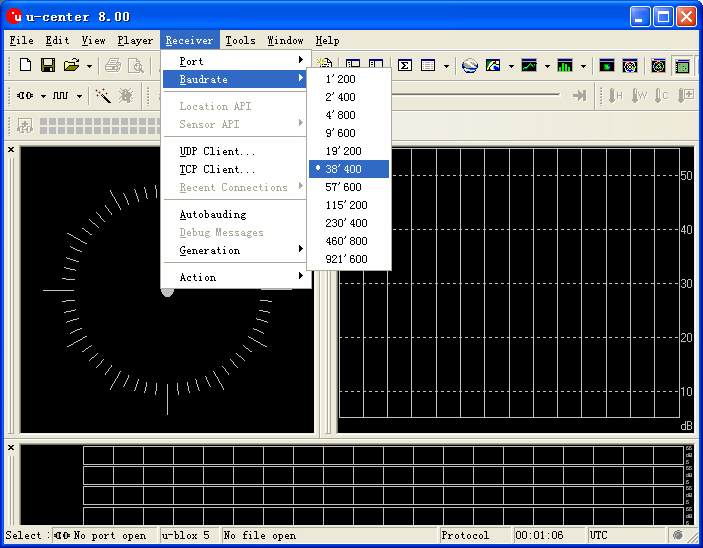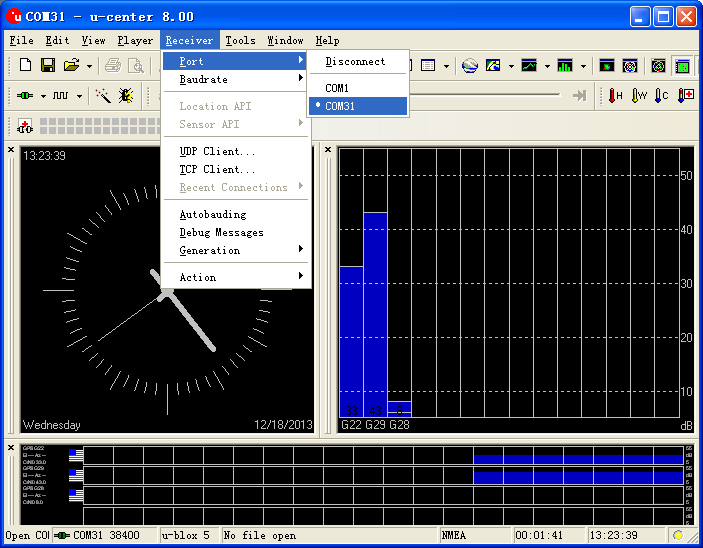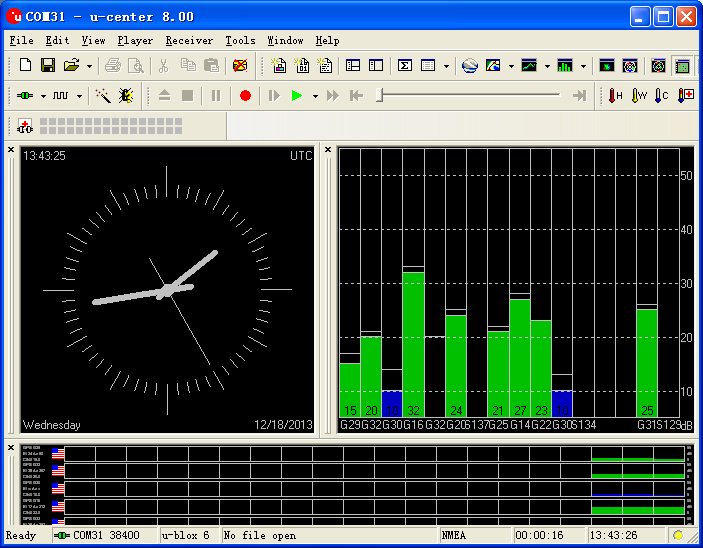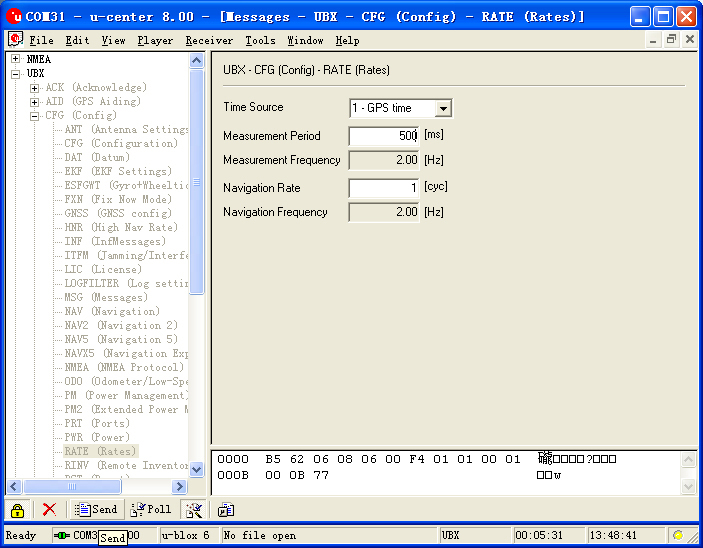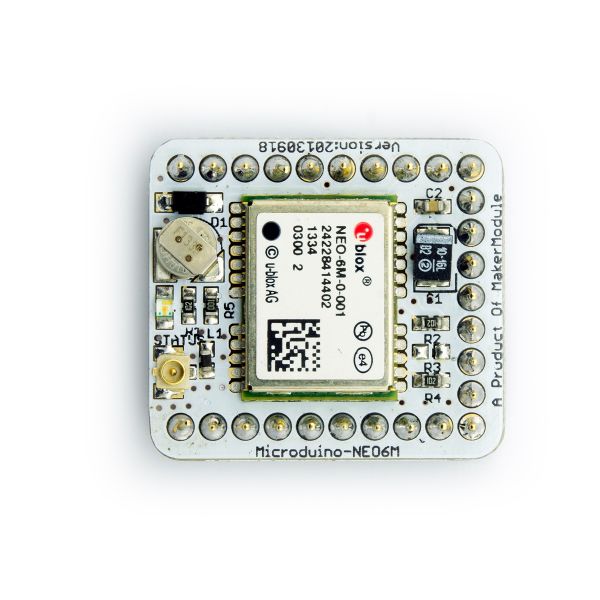“Microduino-GPS”的版本间的差异
(→Feature) |
(→Specifications) |
||
| 第22行: | 第22行: | ||
==Specifications== | ==Specifications== | ||
*Communication protocol: | *Communication protocol: | ||
| − | **Microduino NEO-6M module | + | **Microduino NEO-6M module adopts NMEA-0183 protocol to output GPS data and configures the module through UBX protocol. |
| − | * | + | *Receiving characteristics |
| − | ** | + | **Channel 50,GPS L1(1575.42Mhz) C/A 码,SBAS:WAAS/EGNOS/MSAS |
**Capture tracking sensitivity:-161dBm | **Capture tracking sensitivity:-161dBm | ||
| 第32行: | 第32行: | ||
*Update rate | *Update rate | ||
| − | ** | + | **The maximum rate of 5Hz |
*Capture time | *Capture time | ||
| − | **cold | + | **cold start:27S(Shortest time) |
**warm start:27S | **warm start:27S | ||
**hot start:1S | **hot start:1S | ||
*Note: | *Note: | ||
| − | **Cold | + | **Cold Start: Restart the system when the stored history GPS receiving information of the module gets lost, equivalent to that both the main power and the backup battery are out of charge. |
| − | **Warm | + | **Warm Start: Restart the system when the module saves the history GPS receiving information but the current visual satellite information is not the same with the stored information. |
| − | **Hot | + | **Hot Start: Restart the system when the module has saved the history GPS receiving information which keeps consistent with the current visual satellite information. |
*Interface characteristics | *Interface characteristics | ||
| − | ** | + | **TTL,3.3V/5V microcontroller system compatible |
**Serial communication baud rate: | **Serial communication baud rate: | ||
| − | ***Microduino NEO-6M module supports several baud rate:4800,9600,38400(defult),57600; | + | ***Microduino NEO-6M module supports several kinds of baud rate:4800,9600,38400(defult),57600; |
| − | * Set | + | * Set baud rate from two resistors of the module (R3 and R4. 1k recommended): |
{|class="wikitable" | {|class="wikitable" | ||
! rowspan="1" | R3 || R4 || Protocol || Baud rate | ! rowspan="1" | R3 || R4 || Protocol || Baud rate | ||
2014年7月28日 (一) 07:29的版本
| Language | English |
|---|
|
Microduino-GPS module maybe the most beautiful GPS module that you've seen. Its core module use UBLOX NEO-6M, high sensitivity, update rate up to 5Hz, using mini ceramic antenna with IPEX interface, and build-in a rechargeable battery backup. 目录Feature
| |||||||||||||||||||||||||||||
Specifications
Pin Description
文件:NEO6M-Pinout-2.jpg Microduino-NEO6M-Pinout 文件:NEO6M-Pinout-1.jpg Microduino-NEO6M-Pinout DocumentEagle PCB 文件:Microduino-NEO6M.zip
Main components
Development
Use PC to debug
Use FT232R、Core download and debug
Arduino library and supported package
How to use the library
PPS State indicator
ApplicationDownload programTesp Program:文件:Program Test NEO-6M.zip Test Microduino NEO-6M using FT232 and core module
Test Mocroduino NEO-6M using PCConnection methodThere are two connection methods: 1. Use the default pin (RX0、TX1):
文件:Neo-6m debugging.jpg crossover configuration 2. Use the changed jumper mode If you have changed the jumper as upper described, you can supperipose FT232, NEO-6M and Core module together, then connect to PC to debug directly. Use u-center configuration module to update rage
BugHistoryPicture
Video |
